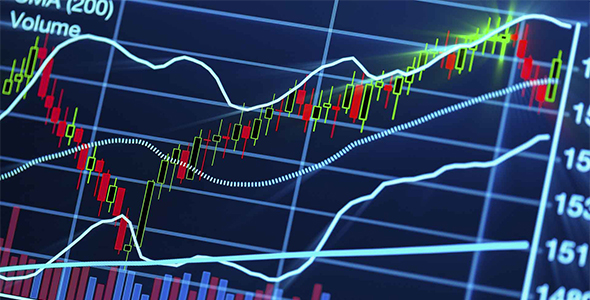
Bollinger Bands are a technical trading tool created by John Bollinger in the early 1980s.
They arose from the need for adaptive trading bands and the observation that volatility was dynamic, not static as was widely believed at the time.
The purpose of Bollinger Bands is to provide a relative definition of high and low.
By definition prices are high at the Upper Band and low at the Lower Band.
This definition can aid in rigorous pattern recognition and is useful in comparing price action to the action of indicators to arrive at systematic trading decisions.
Bollinger Bands consist of a set of three curves drawn in relation to securities prices.
The Middle Band is a measure of the intermediate-term trend, usually a simple Moving Average, that serves as the base for the Upper and Lower Bands.
The interval between the Upper and Lower Bands and the Middle Band is determined by volatility, typically the standard deviation of the same data that were used for the average.
The default parameters, 20 periods and two standard deviations, may be adjusted to suit your purposes:
Middle Bollinger Band = 20-period simple Moving Average.
Upper Bollinger Band = Middle Bollinger Band + 2 * 20-period standard deviation.
Lower Bollinger Band = Middle Bollinger Band – 2 * 20-period standard deviation
Two important tools are derived from the Bollinger Bands:
1. BandWidth
A relative measure of the width of the Bands, and
2. %b
A measure of where the last price is in relation to the Bands.
BandWidth = (Upper Bollinger Band – Lower Bollinger Band) / Middle Bollinger Band
%b = (Last Bollinger Band – Lower Bollinger Band) / (Upper Bollinger Band – Lower Bollinger Band)
The BandWidth is most often used to quantify The Squeeze, a volatility-based trading opportunity and %b is used to clarify trading patterns and as an input for trading systems.









